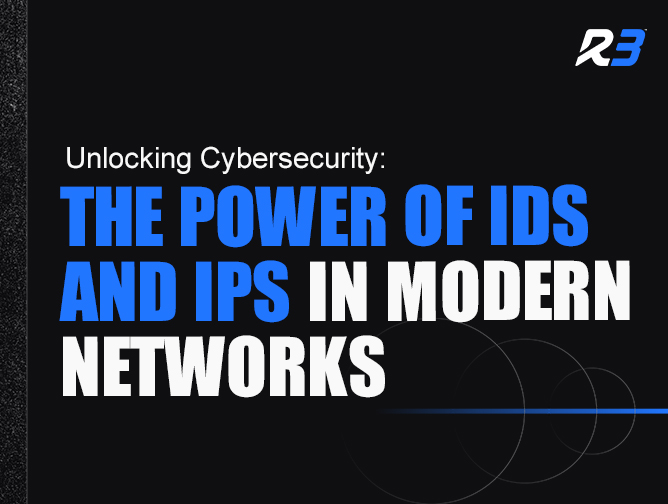In the arms race of cybersecurity, where threats continually evolve to outsmart defenses, Intrusion Detection Systems (IDS) and Intrusion Prevention Systems (IPS) have emerged as pivotal tools for IT directors seeking to safeguard their organizations’ digital fortresses. In this post, we will navigate through the complex landscape of IDS and IPS, understanding their mechanics, benefits, and implementation strategies.
What are IDS and IPS?
Intrusion Detection Systems (IDS) are like vigilant sentinels, monitoring network traffic to detect suspicious activities that could indicate a security breach, such as cyber attacks or policy violations. When an IDS identifies a potential intrusion, it alerts the network administrators or manages an automatic response according to its configuration.
Intrusion Prevention Systems (IPS), on the other hand, are a step ahead and can be seen as the active warriors of network security. Not only do they identify threats, but they also take immediate action to prevent them from causing harm, often before any real damage is done.
Both IDS and IPS deploy a variety of techniques to detect threats, including signature-based detection, which relies on known patterns of malicious activity, and anomaly-based detection, which compares current network behavior to a baseline to spot irregularities.
Beyond Traditional IP Filtering
Traditional IP filtering operates on a more static defense tactic, using predetermined rules to block traffic from specific IP addresses or ranges. While helpful, this method alone is no longer enough in a cyber landscape that’s increasingly sophisticated.
IDS and IPS systems represent an upgrade by incorporating dynamic analysis of the traffic patterns themselves, empowering organizations to not only block known bad actors but also to detect and prevent new threats that traditional IP filtering wouldn’t catch.

Download 6 Common Cyber Attacks & How to Prevent them
Check out our free eBook on 6 Common Cyber Attacks and How to Prevent them.
Implementing IDS and IPS at Your Company
The deployment of IDS and IPS solutions should be a calculated step as part of a broader cybersecurity strategy. Here are some key considerations for IT directors:
- Understand Your Network Architecture: Before implementing IDS/IPS, have a clear map of your network’s architecture including all access points that need to be monitored.
- Choose the Right Solution: Whether it’s host-based or network-based, select an IDS/IPS that fits your organization’s size, complexity, and specific security needs.
- Plan for Integration: IDS/IPS should work seamlessly with existing security infrastructure like firewalls, and the solution should be scalable for future expansion.
- Train Your Personnel: Ensure network administrators and IT staff understand how to operate and manage IDS/IPS solutions effectively.
- Establish Policies: Determine how the system will respond to different types of alerts and ensure these policies are well-documented.
- Continuous Monitoring and Updating: Regularly review alerts, update security definitions, and tweak system parameters to adapt to new threats.
Benefits of Implementing IDS and IPS
IDS and IPS systems present numerous advantages over traditional IP filtering:
- Proactive Security Posture: They provide a proactive security approach that not only detects intrusions but also prevents them from escalating into full-scale breaches.
- Threat Visibility: Administrators gain deeper insight into the types of threats their systems face, which is instrumental in strategic security planning.
- Compliance Assurance: Many industries require businesses to have intrusion detection/prevention as part of regulatory compliance standards.
- Reduced Downtime: By preventing attacks, IPS systems minimize potential downtime that would otherwise affect productivity and potentially cause financial loss.
- Customizable: IDS/IPS can be customized to the unique needs of a company, allowing for tailored security measures.
What IDS and IPS Protect Against
The capabilities of IDS/IPS cut a broad swath across various potential security incidents, including:
- Malware: IDS/IPS systems can detect and block malware and ransomware before they infiltrate the network.
- Zero-Day Exploits: With heuristic and behavior analysis, these systems can fend off previously unknown vulnerabilities exploited by attackers.
- Policy Violations: IDS monitors for policy breaches, while IPS can actively block access or change permissions when a violation is detected.
- DDoS Attacks: IPS solutions can prevent Distributed Denial of Service attacks by identifying and halting the abnormal traffic patterns they produce.
- Insider Threats: Unusual activities that could signify insider threats are flagged for review, and necessary actions can be taken promptly.
In conclusion, IDS and IPS serve as the sophisticated guardrails of modern corporate networks. For IT directors, the integration of these systems offers a robust line of defense against the multifaceted threats of cybercrime. As the digital landscape evolves, so must our methods of protection, and IDS/IPS stand on the frontline of this evolution, ensuring digital infrastructures remain secure, resilient, and trustworthy for all stakeholders involved.
To ensure your company is fortified with the latest protective measures, consider the integration of IDS and IPS into your cybersecurity plan today.






